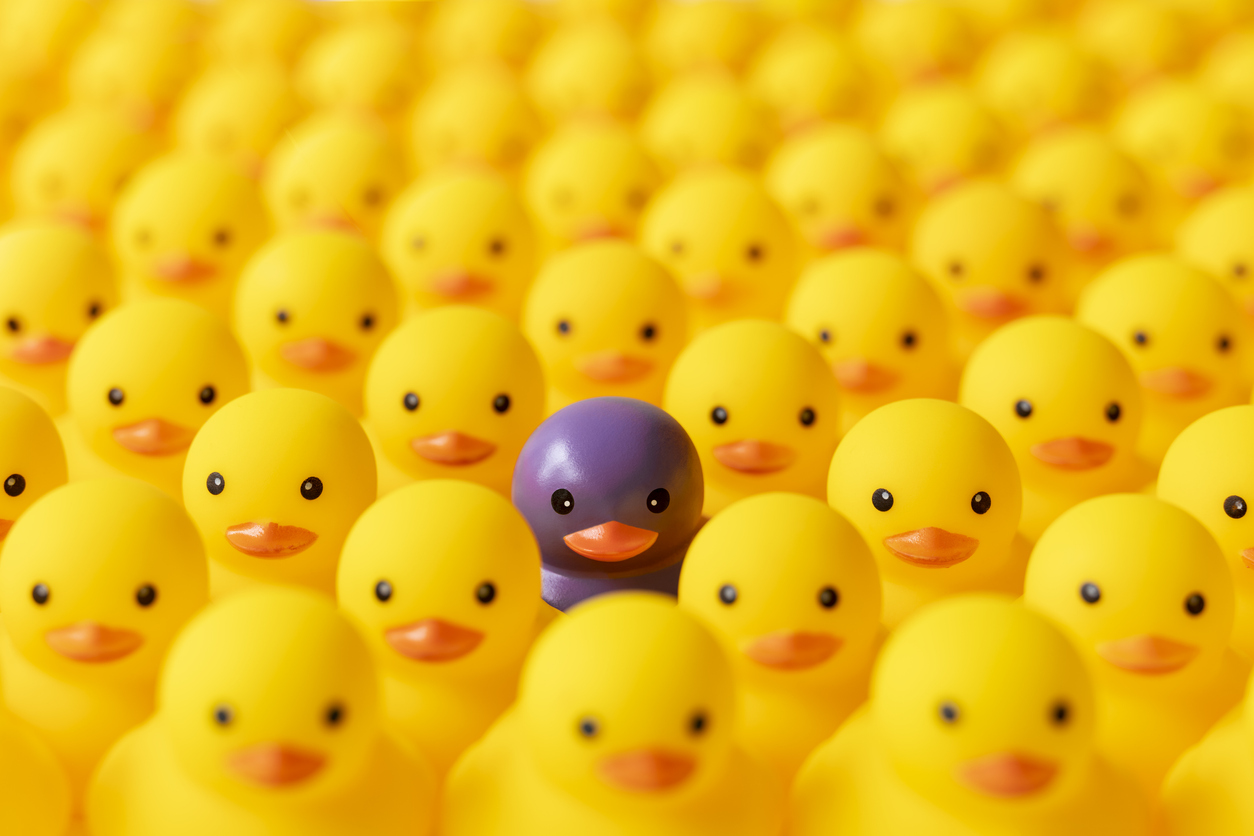
Differentiation doesn’t matter; distinctiveness does
The constant refrain in business school and marketing courses is to “be different.” Differentiating yourself and your company is the key to success and, therefore, should be your sole focus.
But what if they’re wrong?
The best marketers actually focus on being distinctive.
Book a 30 minute call
Reserve 30 minutes with a strategist and get 30 hours worth of value.
One of those marketers is Bryan Law. He’s led teams at Google, HEB, and Salesforce and is currently the Chief Marketing Officer at ZoomInfo.
On Performance Marketing Insiders, he shared why distinctiveness is key to getting ahead and gave five tips to help you put it into practice — from consistent messaging to asset creation to timeliness.
Differentiation vs. distinctiveness
While differentiated and distinctive sound like the exact same thing, they’re not. Being differentiated means making your product or service different. Being distinctive means standing out among the competition.
Why is being distinctive so important?
Everyone is bombarded with advertising messages on every device.
And for B2B buyers, this constant noise from a sea of technologies becomes overwhelming. They simply don’t have the time to learn the difference between the product they’re using and a competitor.
In fact, Google and Bain found that over 90% of buyers have a shortlist of the vendors they want to use. And 60% of the time, that list only has one company on it.
To get on that list, you need to stand out. You need to prove your relevance in the space so that people remember you when they’re ready to buy.
And this has been proven time and again by The Ehrenberg-Bass Institute, the largest marketing research institute in the world.
If you ask people how they think about different brands, you’ll notice a ton of overlap. Even if you ask people to compare the product they use to a competitor, they’ll end up with two very similar descriptions. We just don’t spend much time thinking about products we’re not using.
Focusing less of your time on why someone should pick your product over a competitor and more of it on getting noticed can be a powerful unlock.
How to be distinctive in 5 steps
Hammering home certain features or value props won’t get you in the running. Being memorable is what matters. Here’s how to do it.
1. Pick a lane and stick to it
Doing something consistently is what gets you brand recognition.
It could be that you’re humorous. Or maybe you’re very doom and gloom. Or you’re always the hero.
Whatever that unique thing is, do it and do it consistently — across your logos, taglines, symbols, sounds, and characters.
But be wary of the celebrity trap. Bryan mentioned that while most brands gravitate toward celebrities, those ads typically fall flat.
Why?
Because actors and athletes are already known for their “thing.” People won’t associate them with your brand; they’ll associate them with their past work.
A Geico lizard, on the other hand, is very distinctive. There’s nothing like it in or outside of the insurance industry.
2. Use the same message for all segments
We have many nodes in our brains that get fired in certain situations. In other words, something triggers our memory.
You want to figure out what would trigger a customer’s brain.
For example, if you’re thinking about buying a taco, what are you thinking about?
The crunch? The smells? The atmosphere?
Knowing what that is and how to message that to your audience will make your brand stick. Wharton’s neuroscience initiative even did a macro-level study showing this relationship across people and industries.
Although it’s all the rage right now, being hyper-personalized can degrade the strength of your brand.
People might be context-switching depending on how you targeted them. They might move between different companies or take on different roles. You want to keep your targeting thoughtful and broadly appealing to build brand strength.
3. Know your customers’ buying situation
You have to know how buyers are approaching a purchase.
Say their CEO tells them they need to drive greater efficacy in media spend. In that situation, what would their thoughts and emotions be?
It might be PTSD, or it might be some positive feelings. Bryan calls them “category entry points.”
The best way to find them is to ask customers and prospects how they feel about your category. Ideally, you want them to say multiple things so you can have some interconnection between different pieces they care about.
Then ask them how they feel about your brand and one of your competitors’ brands. That will show you the white space in the category, and that’s where you should focus.
The more you can hone in on that, the more likely your brand will simultaneously pop into someone’s mind when they’re ready to buy.
The beauty of these category entry points is that they have a network effect. The person you’re targeting may have colleagues or friends who work in a similar space and share the same category entry points. So if everyone is talking about those entry points, your brand will probably also be part of the conversation.
Helpful Hint
ZoomInfo is launching a new product to make this process even more data-driven. It will review closed deals and find out what topics the customer researched before purchasing. You could combine that data with calls you recorded in Gong or Chorus to understand customer sentiment and what messaging is working and what isn’t.
Bryan said they used this internally at ZoomInfo last year to get a pulse on how buyers were feeling about the downturn:
“We went through the Chorus data and said ok, when people mention “downturn,” what else comes up in the conversation? When we put all the data together and injected some of them into our ads, we saw a healthy uptick in click-through rate and site visits.”
4. Ensure all of your assets reflect your brand
Brand assets vary from company to company, but you know a good one when you see it. Maybe it’s a company’s logo, colors, or foreign characters. They stick out and make you think of a brand.
You want that kind of unique recall. So as you start to develop your brand asset, test it out and ensure no one else is doing it before you invest more time and effort.
Keep in mind that people’s memories decay over time. Maybe you had a brand asset that went by the wayside a few years ago. Since people already know it, you could resurrect it and put a modern, even more memorable, spin on it.
5. Be timely
89% of the time, buyers choose from their shortlist, but being timely can be a huge factor in getting on it or disrupting it.
Think about how you can leverage automation to get and stay top of mind.
At ZoomInfo, Bryan’s team set up an automated workflow that triggered direct mail, social, and display ads to anyone in their ICP and had hit a particular stage in the funnel. Each channel had a slightly different message, giving the team an fast, automated way of figuring out which content assets produced the most responses.
Just the act of doing that multivariate experiment brought in bigger deals that closed fast. And it also helped Bryan’s team allocate their marketing spend more effectively.
Helpful Hint
ZoomInfo has a whole section of its website dedicated to free GTM plays like this one. Clicking on a play will pull you into the ZoomInfo platform with a template ready for you to try.
Standing Out Is Fun
The best part about being distinctive is that it’s fun. Sure, there’s a little science behind it, but thinking outside the box takes a lot of creativity and collaboration.
Learn your customers inside and out and tap into your quirky side to make your brand’s uniqueness its superpower.
Hoping to hear more of Bryan’s tips and tricks? Listen to his full episode on Performance Marketing Insiders.
Another way to accelerate your digital marketing strategy is to join one of our monthly Growth Clinics. Gain actionable tips to reach the top of your B2B and B2C marketing game.
Most newsletters suck...
So while we technically have to call this a daily newsletter so people know what it is, it's anything but.
You won't find any 'industry standards' or 'guru best practices' here - only the real stuff that actually moves the needle.







